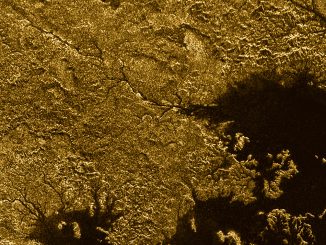
Icy moon Mimas dwarfed by Saturn’s rings
Saturn’s icy 246-mile-wide moon Mimas (near lower left) appears tiny by comparison to the planet’s rings, but scientists think the all of the small, icy particles spread over a vast area that comprise the rings are no more than a few times as massive as Mimas. The view was obtained by NASA’s Cassini spacecraft at a distance of approximately 564,000 miles from Saturn.









